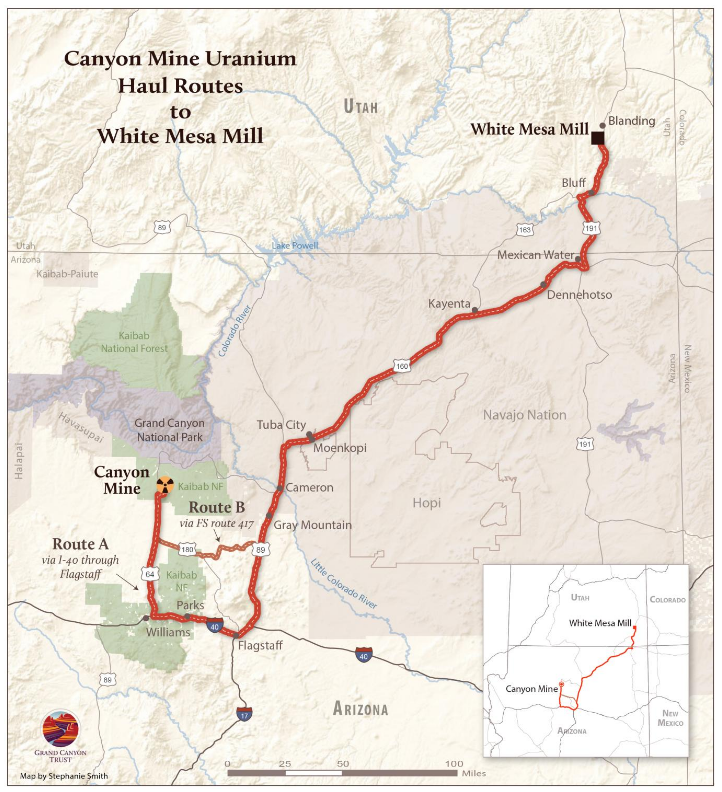Uranium ore – the radioactive material that is refined for use in the production of nuclear fuel and atomic weapons – has started to be hauled out of a controversial mine located just south of Grand Canyon National Park.
Grand Canyon Trust told IFLScience that two trucks had been spotted leaving the Canyon Mine – officially known as the Pinyon Plain Mine – on Tuesday, July 30, embarking on a 482-kilometer (300-mile) journey across northern Arizona and the Navajo Nation toward the White Mesa Mill in southern Utah.
Once fully up and running, six large uranium haul trucks are expected to make this journey every day.
The Navajo Nation passed a law in 2012 to ban the transportation of uranium across their reserve and has expressed deep disappointment about the recent news of “illegal transport of uranium across the reservation.”
In a test of the law, tribal police were ordered to stop the trucks as they crossed the land, but they reportedly failed to catch up to them.
“Obviously the higher courts are going to have to tell us who is right and who is wrong. But in the meantime, you’re in the boundaries of the Navajo Nation,” Navajo President Buu Nygren told The Associated Press (AP).
The mine sits near the south rim of the Grand Canyon within the boundary of Baaj Nwaavjo I’tah Kukveni – Ancestral Footprints of the Grand Canyon National Monument.
A map showing the route between the Pinyon Plain Mine in Arizona and the White Mesa Mill in southern Utah.
Image credit: Grand Canyon Trust
Mining of the radioactive ore commenced in December 2023 against a deluge of opposition and environmental concerns. The Havasupai Tribe, the Grand Canyon Trust, and many other groups had attempted to stop activity at Pinyon Plain Mine from moving forward using legal challenges, but a court ruling in February 2022 upheld the view that the miners had valid existing rights.
The Havasupai Tribe relies on water from aquifers that sit below the Canyon Mine. In January 2024, they released a statement claiming the mine was “desecrating one of our most sacred sites and jeopardizing the existence of the Havasupai Tribe.”
“A whole set of unknown and new problems will exist when the company begins transporting uranium over the land,” added the Havasupai Tribe.
Their concerns have been backed up by peer-reviewed research on mining in the Grand Canyon, which concluded: “Contaminants, either from land-surface or subsurface sources, are likely to be transported into the deep aquifer, which is the primary source of South Rim springs and drinking water wells.”
There is also a long and dark history of Native American communities such as the Navajo People being negatively impacted by uranium mining on the Colorado Plateau.
For their part, Energy Fuels, the company that operates the uranium mine, claims their operations aren’t a danger to people or the natural world, citing “extensive controls in place to ensure protection of air, water, wildlife, and the environment.”
“Tens of thousands of thousands of trucks have safely transported uranium ore across northern Arizona since the 1980s with no adverse health or environmental effects. Materials with far greater danger are transported every day on every road in the county. Ore is simply natural rock. It won’t explode, ignite, burn or glow, contrary to what opponents claim,” the president and chief executive of Energy Fuels, Mark Chalmers, said in a statement, according to AP.
Source Link: Trucks Loaded With Uranium Ore Leave Grand Canyon Mine Amid Backlash
